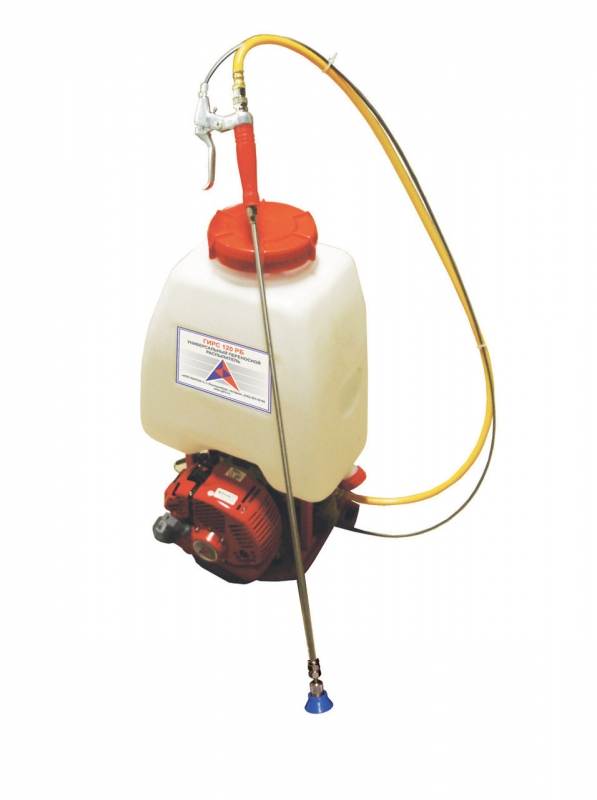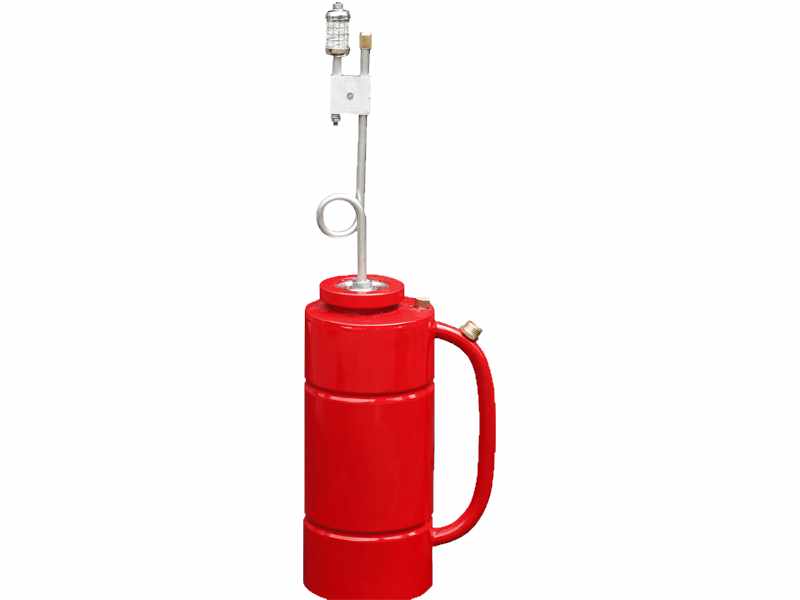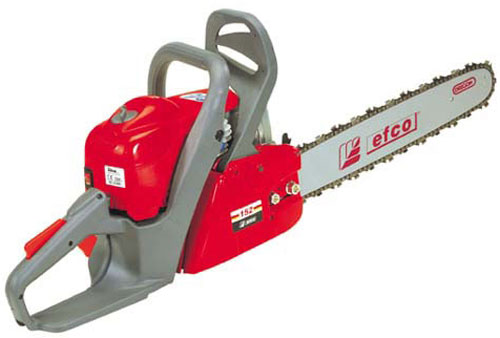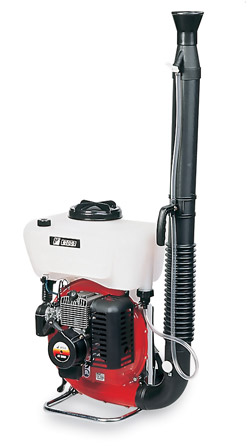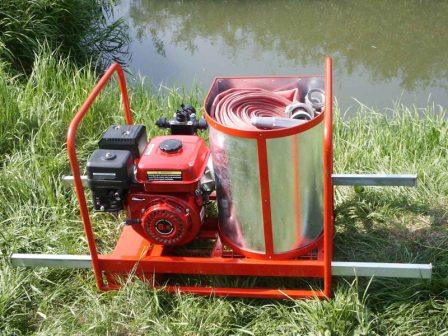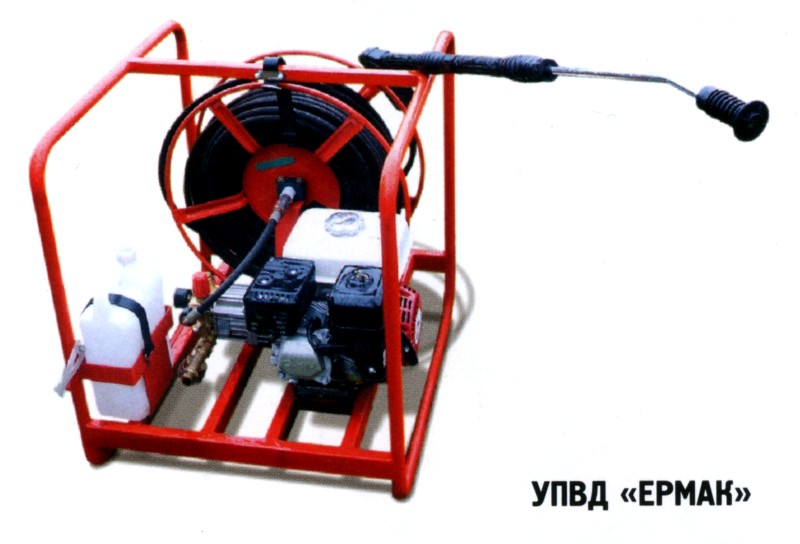Aircraft of the State Enterprise "Kazavialesoohrana"
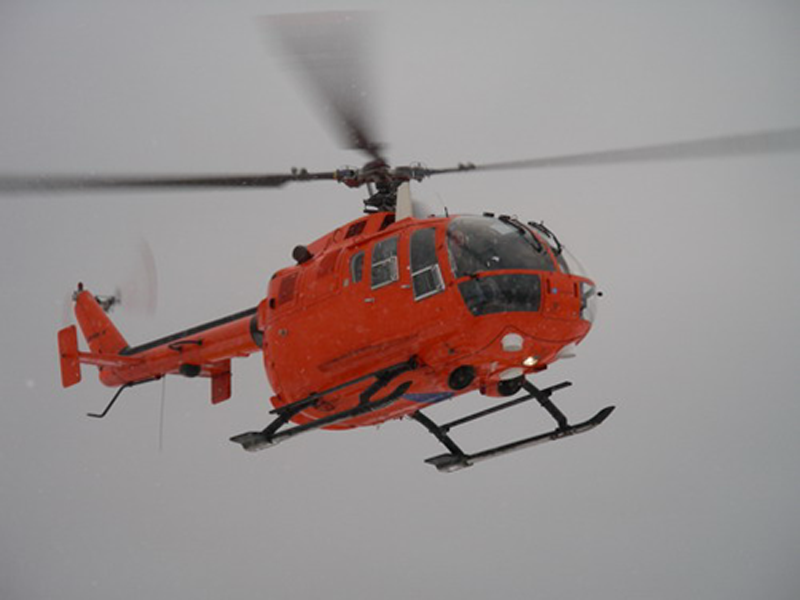 Bo.105 - German multi-purpose and attack helicopter. It is produced in military and civilian modifications. Developed by the German company MBB (DASA).
Bo.105 - German multi-purpose and attack helicopter. It is produced in military and civilian modifications. Developed by the German company MBB (DASA).
I made the first flight in 1967, in total by 2001 more than 1200 helicopters of various modifications were produced. It is used by many countries around the world, it is widely used in civil aviation.
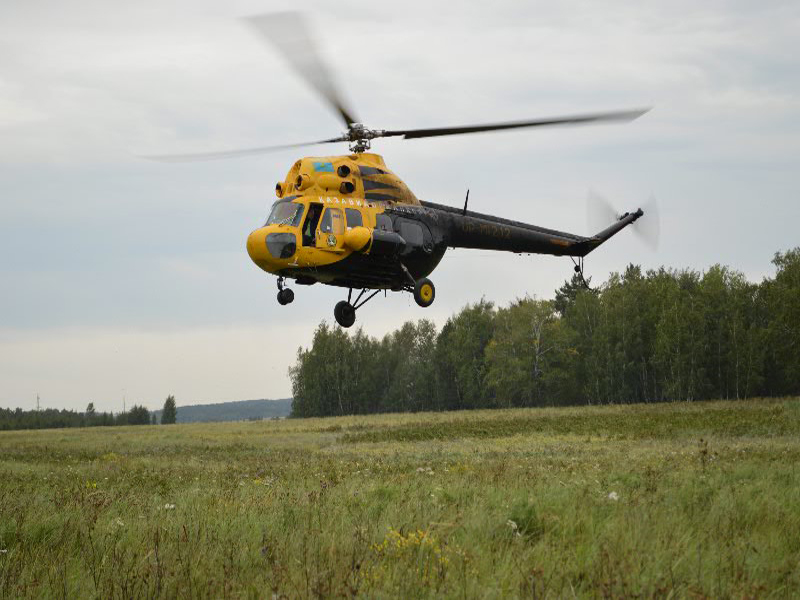 MI-2 (NATO classification: Hoplite - "Hoplite") is a Soviet multipurpose helicopter, developed by the MIL Mil Design Bureau in the early 1960s. In 1965, serial production was launched in Poland. It is widely used for many civil and military tasks. Before the end of production in 1992, over 5,400 units were built. Even now, the Mi-2 takes part in tenders, competing with its successors Ka-226 and Ansat.
MI-2 (NATO classification: Hoplite - "Hoplite") is a Soviet multipurpose helicopter, developed by the MIL Mil Design Bureau in the early 1960s. In 1965, serial production was launched in Poland. It is widely used for many civil and military tasks. Before the end of production in 1992, over 5,400 units were built. Even now, the Mi-2 takes part in tenders, competing with its successors Ka-226 and Ansat.
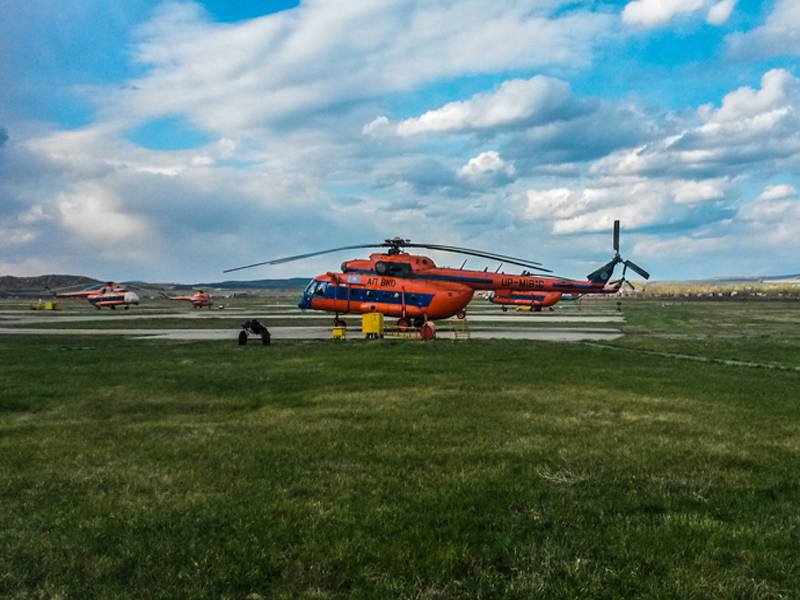 MI-8 (B-8, article "80", on the codification of NATO: Hip - "hip") - Soviet / Russian multipurpose helicopter, developed by OKB ML Mil in the early 1960s. It is the most massive twin-engine helicopter in the world, and is on the list of the most massive helicopters in the history of aviation. It is widely used for many civil and military tasks.
MI-8 (B-8, article "80", on the codification of NATO: Hip - "hip") - Soviet / Russian multipurpose helicopter, developed by OKB ML Mil in the early 1960s. It is the most massive twin-engine helicopter in the world, and is on the list of the most massive helicopters in the history of aviation. It is widely used for many civil and military tasks.
The MI-8MTV is a unique multipurpose helicopter, based on the Mi-8T helicopter. It differs from the Mi-8T with a powerful power plant, modified avionics and a number of changes in the design of the fuselage. It has two gas turbine engines TV3-117VM, the capacity of each of them is 2200 horsepower.
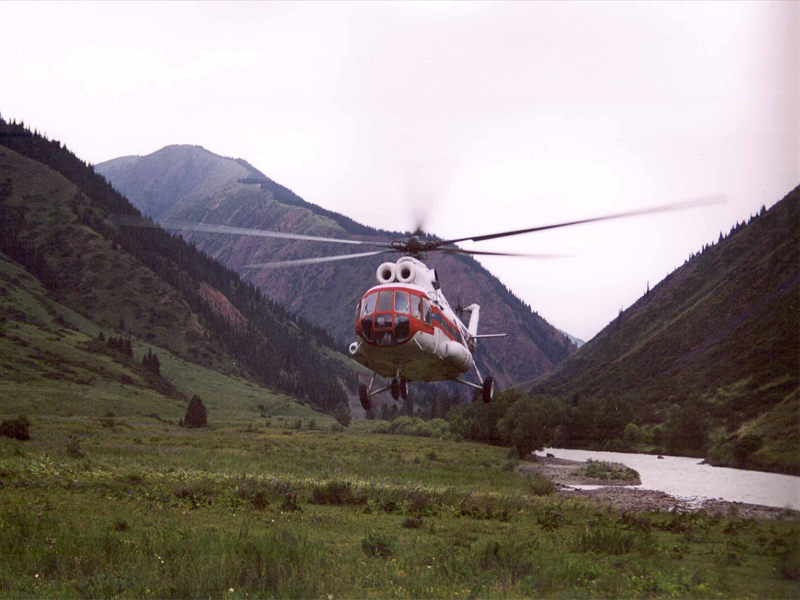 Mi-17 helicopters are further development of Mi-8 helicopters with two TVZ-117MT GTE take-off power of 1400kW, and improved performance. The development of the Mi-17 helicopter was completed in 1980, and in 1981, he was first demonstrated at the aerospace exhibition in Paris. Mi-17 helicopters are produced by the Kazan Helicopter Plant and an aviation plant in Ulan-Ude, where more than 2,000 Mi-17 helicopters of various modifications have been built.
Mi-17 helicopters are further development of Mi-8 helicopters with two TVZ-117MT GTE take-off power of 1400kW, and improved performance. The development of the Mi-17 helicopter was completed in 1980, and in 1981, he was first demonstrated at the aerospace exhibition in Paris. Mi-17 helicopters are produced by the Kazan Helicopter Plant and an aviation plant in Ulan-Ude, where more than 2,000 Mi-17 helicopters of various modifications have been built.
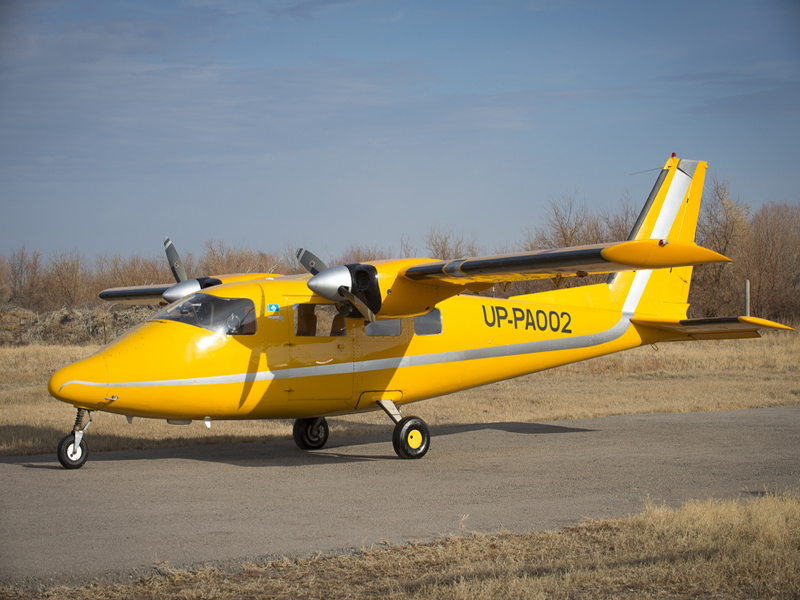 Partenavia P.68 - light transport aircraft. Developed by the Italian company Partenavia. Created to provide regular, charter and civilian transportation. The prototype of the P.68 aircraft made the first flight on May 25, 1970. Had several modifications. Structurally it is a high-wing, equipped with two turboprop engines.
Partenavia P.68 - light transport aircraft. Developed by the Italian company Partenavia. Created to provide regular, charter and civilian transportation. The prototype of the P.68 aircraft made the first flight on May 25, 1970. Had several modifications. Structurally it is a high-wing, equipped with two turboprop engines.
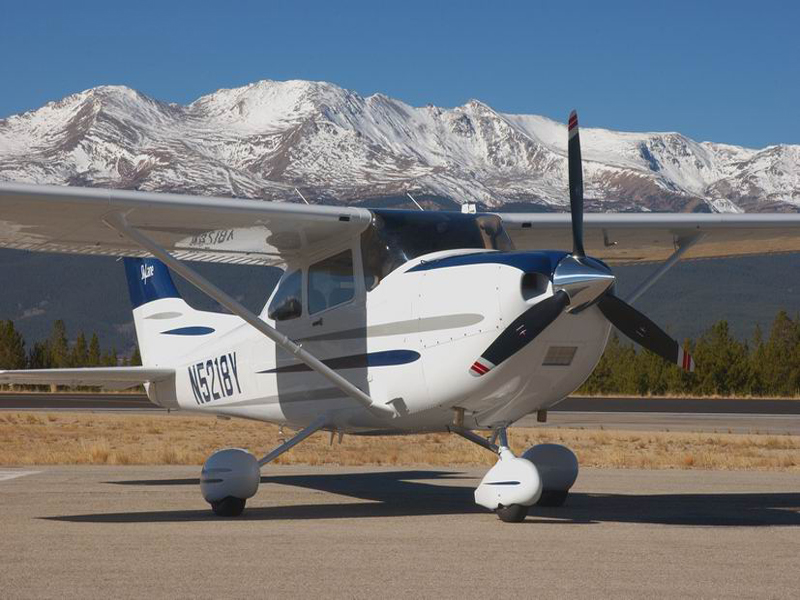 Cessna 182. The Skylane prefix was first used in the name of the modification 182A to denote more perfect equipment of the model) - an American lightweight general-purpose aircraft. Developed by Cessna. One of the most mass airplanes in the history of aviation. Serial release - from 1956 to 1985. In 1994 Cessna announced plans to resume production of the model 182. The prototype of the new 182S made the first flight on July 15, 1996, and the first deliveries took place in April 1997. It is produced till now (2011). Since 1956, more than 25,000 airplanes have been built in more than 15 modifications. It was made of metal, although some parts, such as the engine hood and wings, are made of fiberglass or thermoplastic.
Cessna 182. The Skylane prefix was first used in the name of the modification 182A to denote more perfect equipment of the model) - an American lightweight general-purpose aircraft. Developed by Cessna. One of the most mass airplanes in the history of aviation. Serial release - from 1956 to 1985. In 1994 Cessna announced plans to resume production of the model 182. The prototype of the new 182S made the first flight on July 15, 1996, and the first deliveries took place in April 1997. It is produced till now (2011). Since 1956, more than 25,000 airplanes have been built in more than 15 modifications. It was made of metal, although some parts, such as the engine hood and wings, are made of fiberglass or thermoplastic.
 An-2 (on codification of NATO: Colt - "Foal", razg. - "Kukuruznik", "Annushka") - Soviet light multi-purpose aircraft. It is a piston single-engine biplane with a wing wing. It is equipped with the A.Shvetsov engine ASh-62IR. An-2 is used as an agricultural, sports, transport, passenger aircraft and is used by the Air Force of many countries. For 2012, 2271 An-2 are in operation in the world; in Russia there are 1,580 An-2 aircraft, of which 322 are operational.
An-2 (on codification of NATO: Colt - "Foal", razg. - "Kukuruznik", "Annushka") - Soviet light multi-purpose aircraft. It is a piston single-engine biplane with a wing wing. It is equipped with the A.Shvetsov engine ASh-62IR. An-2 is used as an agricultural, sports, transport, passenger aircraft and is used by the Air Force of many countries. For 2012, 2271 An-2 are in operation in the world; in Russia there are 1,580 An-2 aircraft, of which 322 are operational.
Helicopters in the service of the Kazavialesoohrana
Firefighting
Equipping the helicopter with additional equipment makes it possible to use it in forestry - to extinguish forest fires. Usually, with the help of helicopters, water or chemical flame retardants are thrown onto the fire. For one flight the technician is able to drop up to several tons of water, which is an effective tool in the fight against dangerous elements.
Monitoring of ecological zones
Prevention of poaching is similar with the patrolling function of helicopters. That's why helicopters are hardly the only helper in the fight against illegal loggers.
Thus, helicopters not only serve as transportation, but also help to save the natural resources that are falling every day, and sometimes even somebody's priceless lives.
